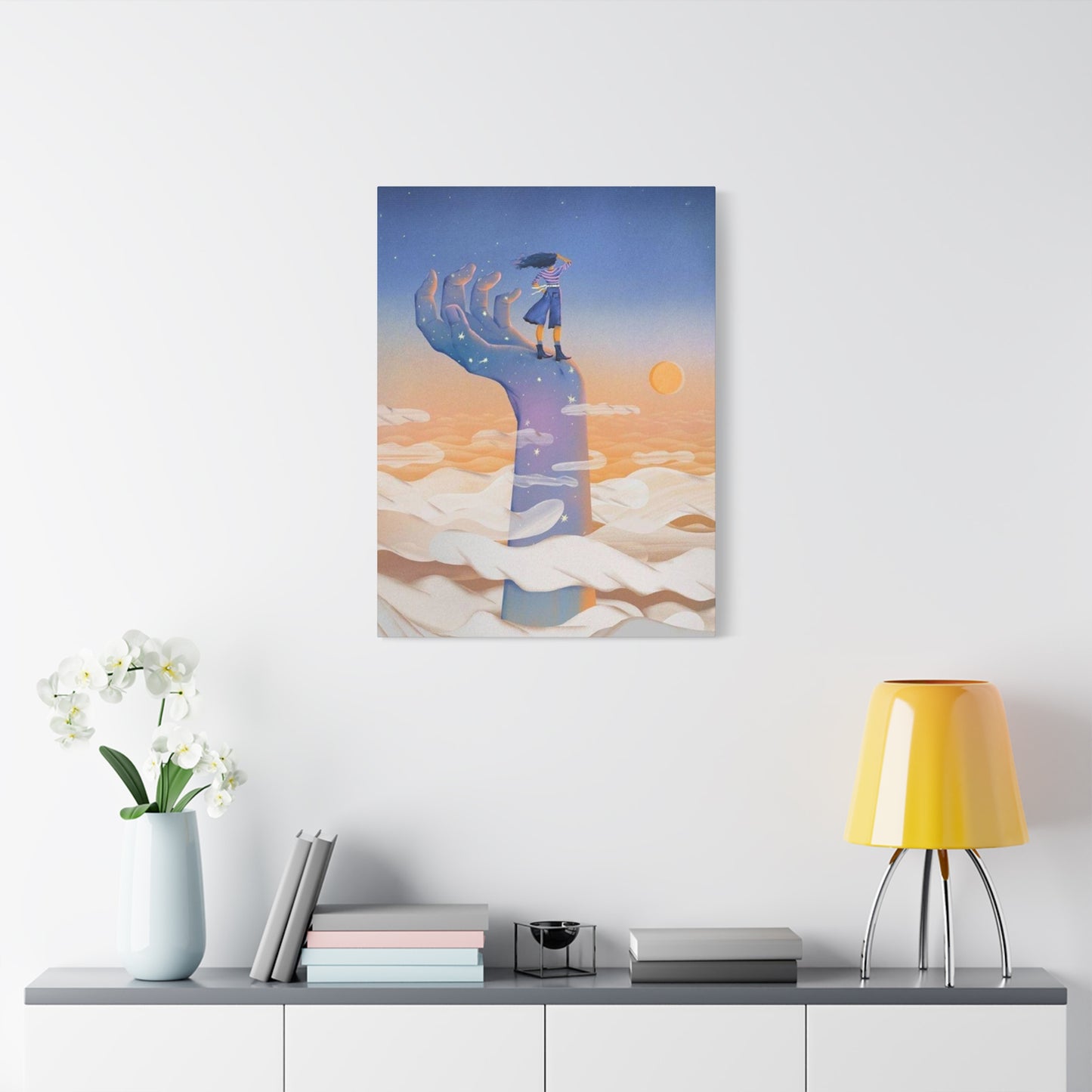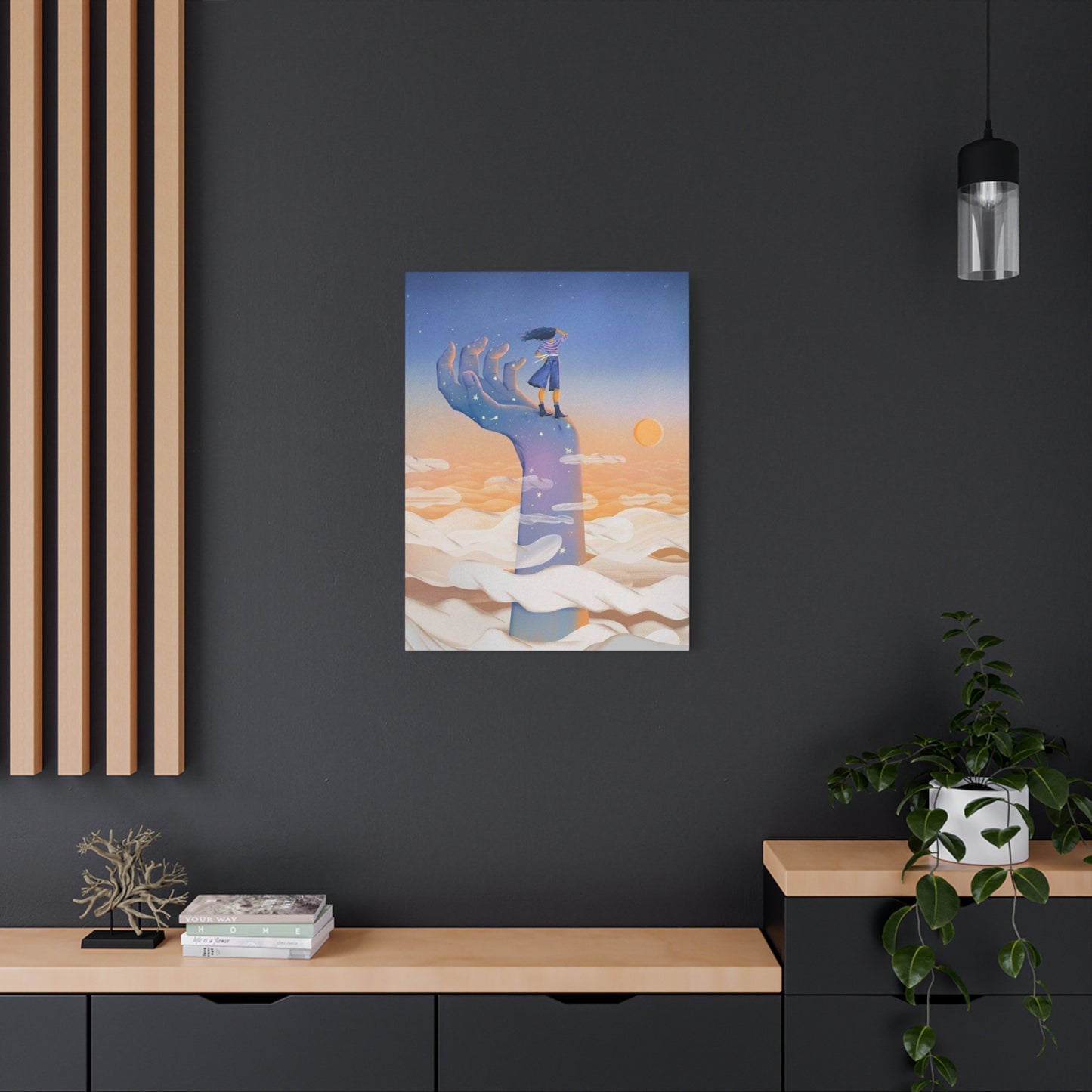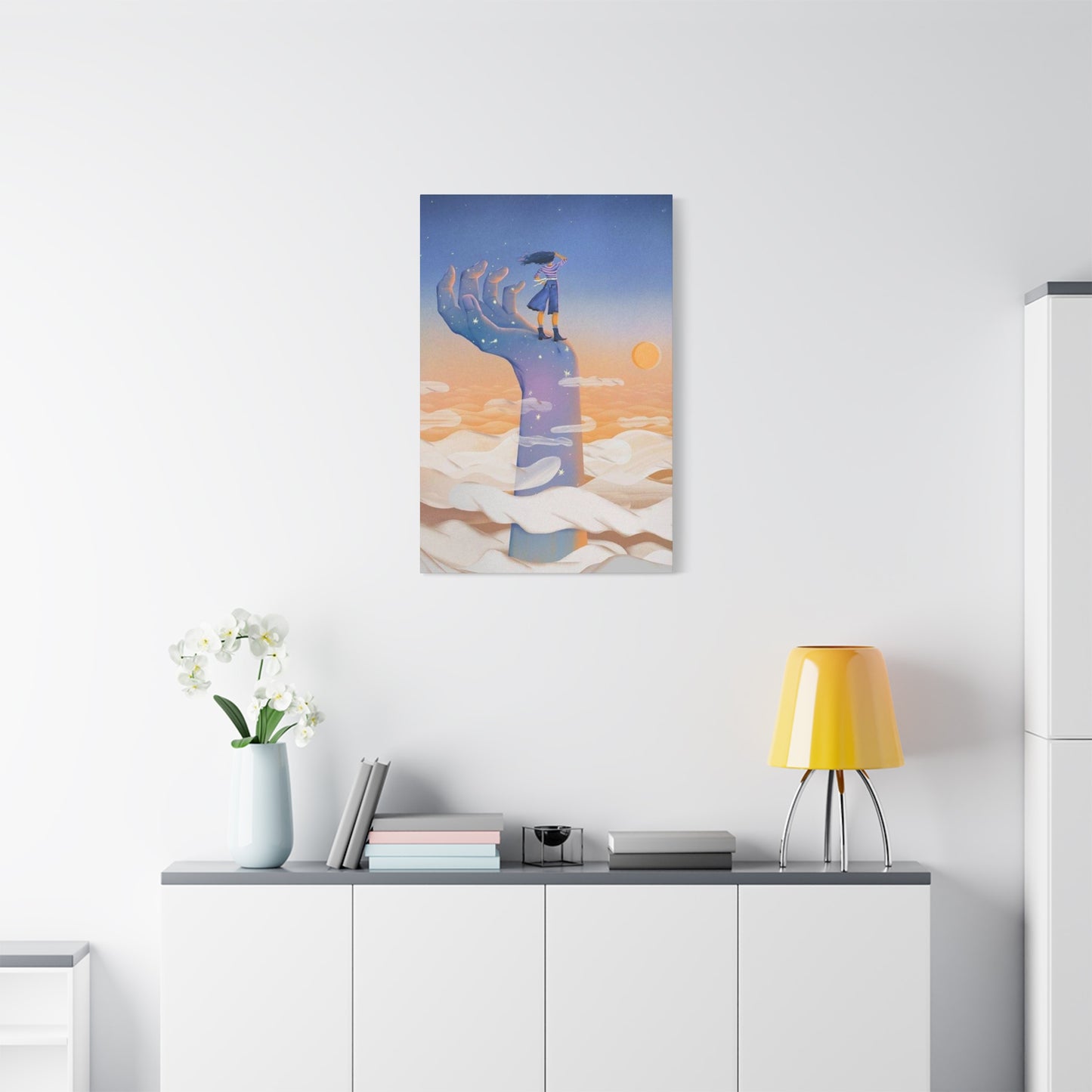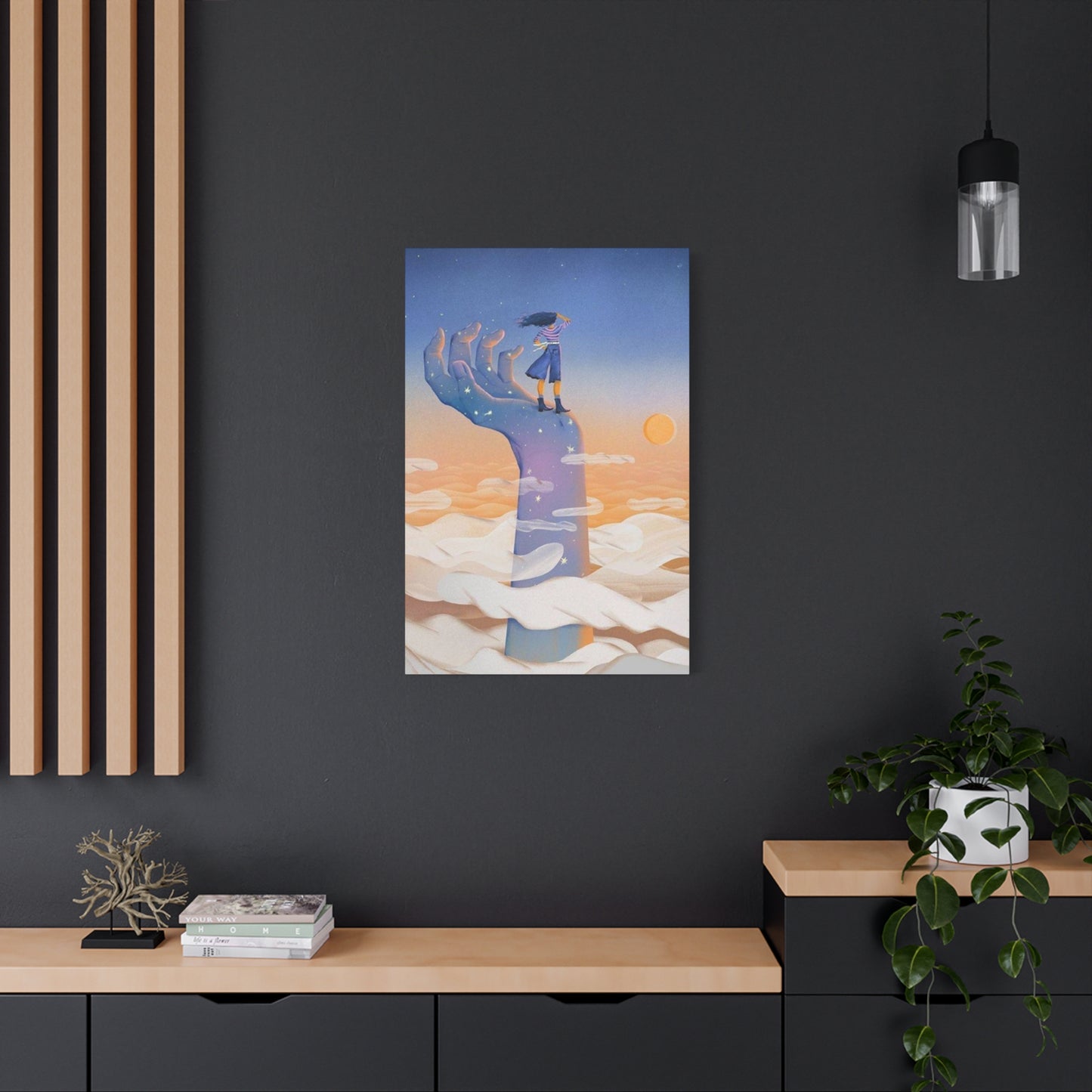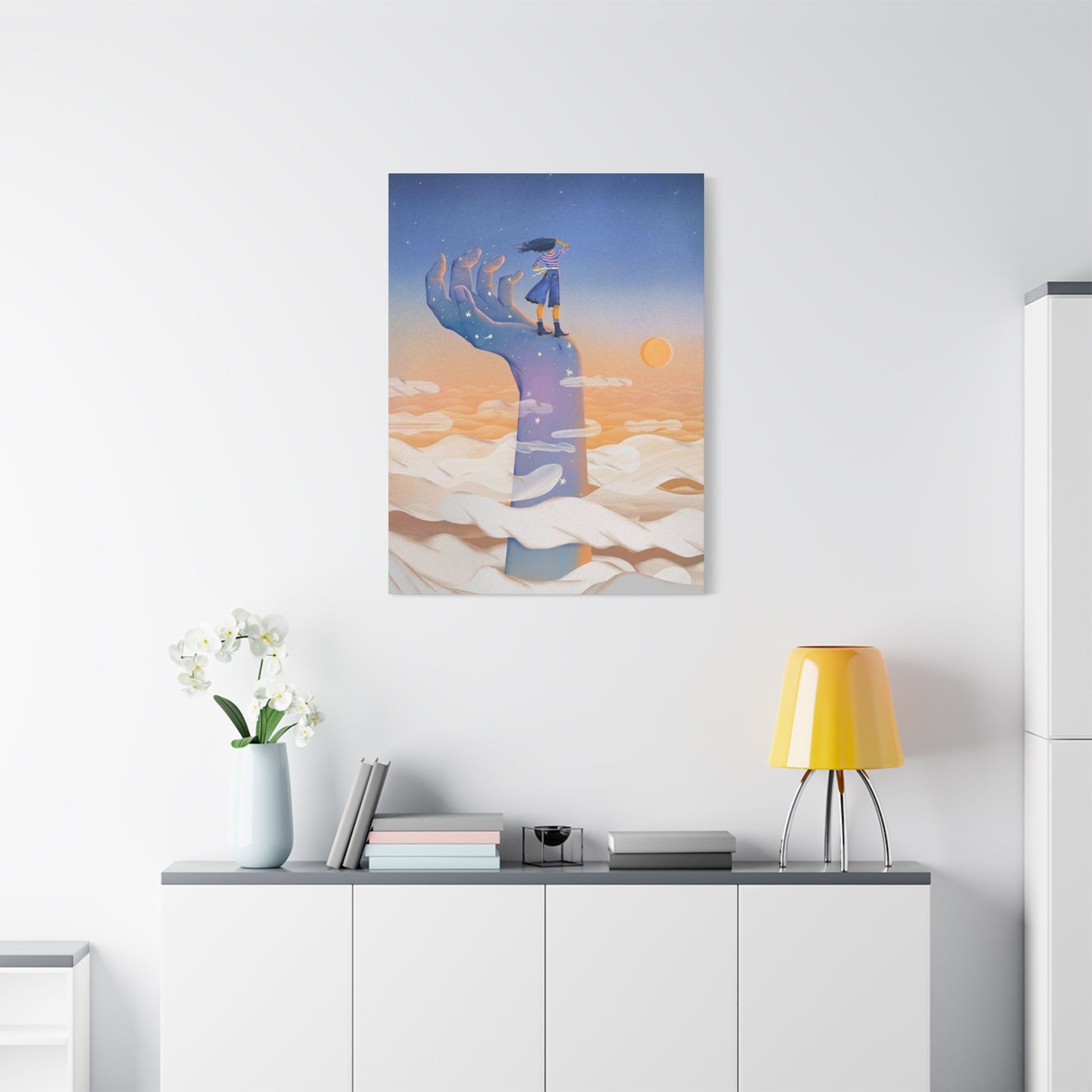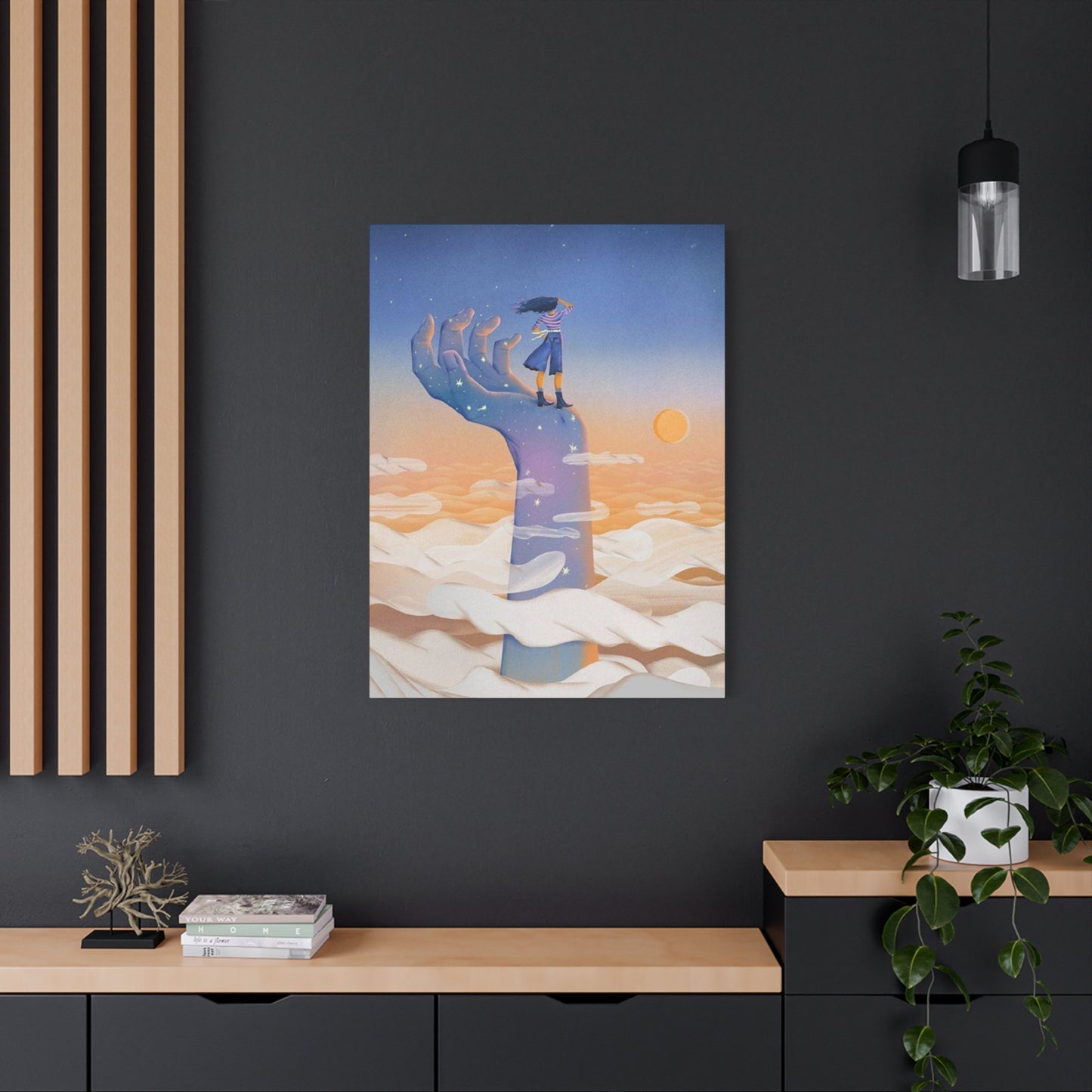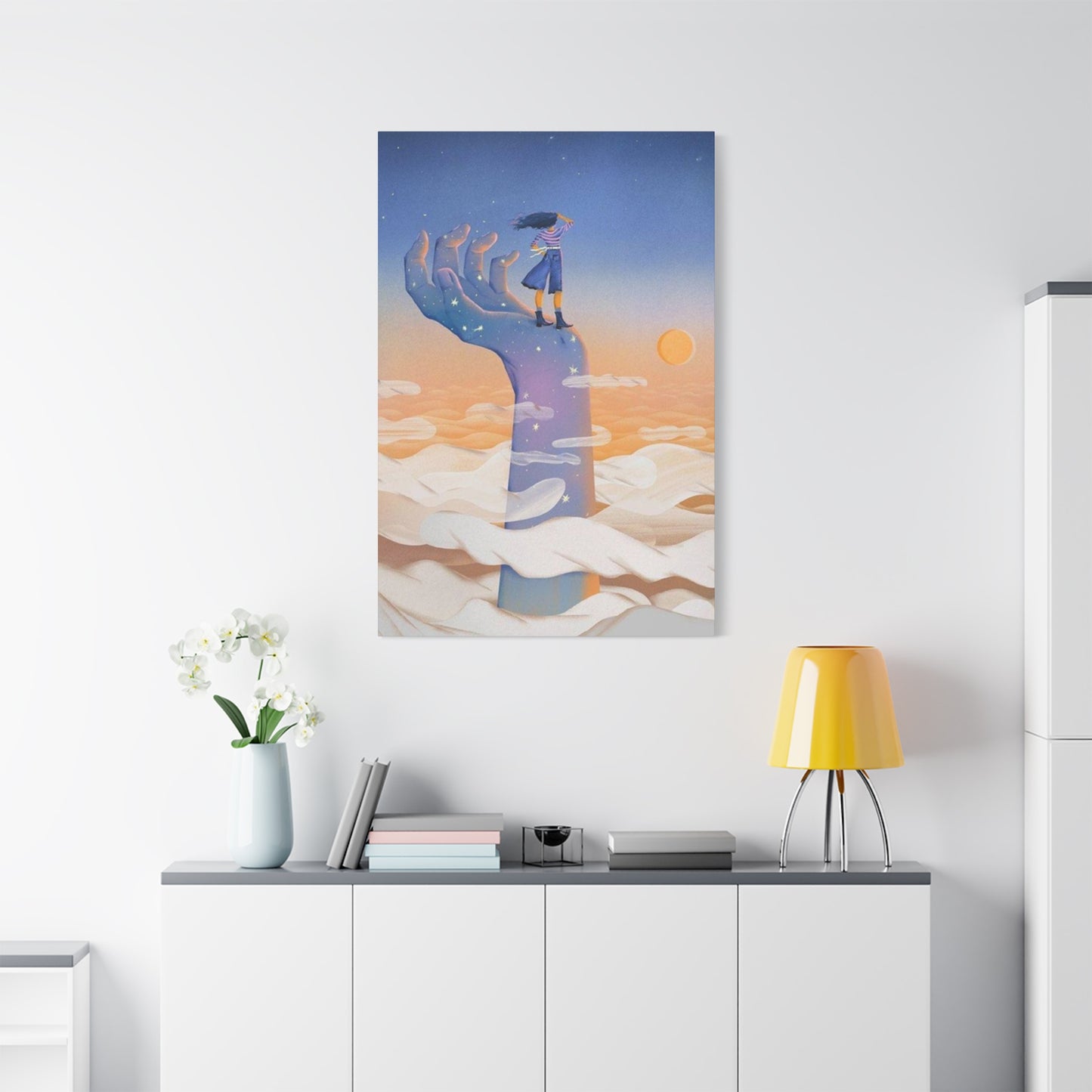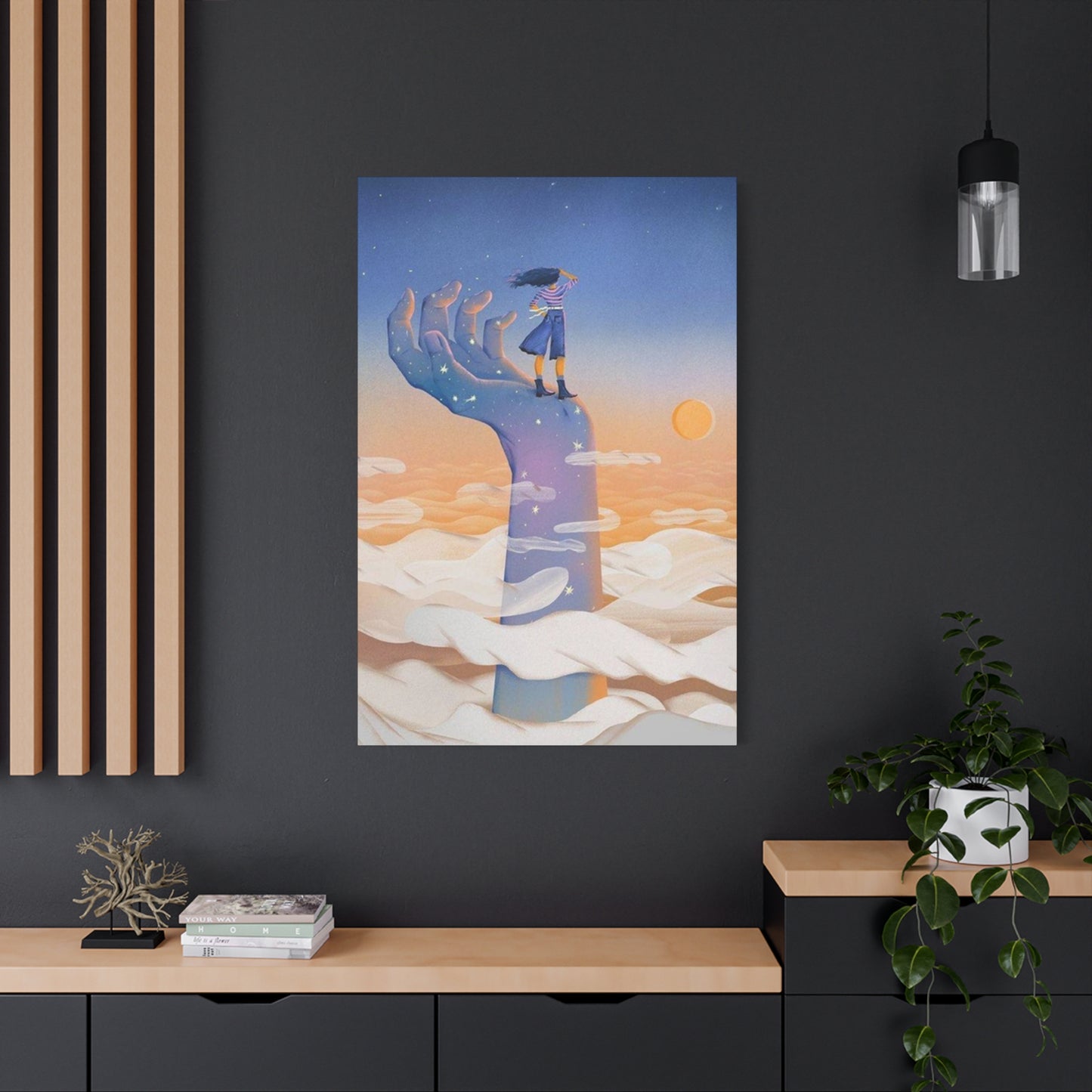Capturing Vulnerability and Strength: Girl on a Hand Wall Art Ideas
Hand wall art has emerged as one of the most captivating and personally meaningful forms of home decoration in recent years. This artistic movement represents a significant shift from traditional commercial artwork toward more personal, handcrafted expressions that carry deep emotional significance. The growing popularity of hand wall art stems from people's desire to create homes that reflect their unique personalities and experiences rather than relying solely on mass-produced decorative elements.
The trend has gained momentum as homeowners increasingly seek authentic and meaningful ways to beautify their living environments. Hand wall art offers an intimate connection between the creator and the viewer, transforming simple handprints into powerful statements of identity, family bonds, and artistic vision. This form of artistic expression transcends age boundaries, appealing to parents who want to preserve precious memories of their children's growth, adults seeking therapeutic creative outlets, and artists exploring new mediums for their work.
Contemporary hand wall art encompasses various techniques, from simple handprint impressions to complex layered compositions that incorporate multiple colors, textures, and artistic elements. The accessibility of this art form makes it particularly appealing to individuals who may not consider themselves traditional artists but still desire to create something beautiful and meaningful for their homes.
The movement has been further accelerated by social media platforms where people share their creations, inspiring others to experiment with hand wall art projects. This digital sharing has created communities of enthusiasts who exchange techniques, color combinations, and creative ideas, fostering a global network of hand art practitioners.
Professional artists have also embraced hand wall art, elevating it from simple craft projects to sophisticated artistic statements. These artists demonstrate how handprints can be transformed into abstract compositions, realistic representations, and conceptual pieces that challenge viewers' perceptions of what constitutes fine art.
The therapeutic aspects of creating hand wall art cannot be overlooked. The tactile nature of working with hands in paint or clay provides a meditative experience that many find relaxing and stress-relieving. This has led to the incorporation of hand wall art activities in art therapy sessions, mindfulness practices, and wellness programs.
Educational institutions have recognized the value of hand wall art projects in developing children's creativity, fine motor skills, and self-expression abilities. Schools and daycare centers frequently use handprint activities as both educational tools and commemorative projects that parents treasure for years to come.
Beginner's Journey into DIY Hand Wall Art Creation
Creating DIY hand wall art presents an excellent entry point for individuals new to artistic pursuits. The beauty of this medium lies in its simplicity and the immediate satisfaction it provides. Beginners can start with basic handprint techniques and gradually develop more sophisticated approaches as their confidence and skills grow.
The initial step in DIY hand wall art creation involves gathering appropriate materials. Basic supplies include non-toxic paints, canvases or paper, brushes for detail work, and protective coverings for work surfaces. Water-based acrylic paints are ideal for beginners due to their ease of use, quick drying time, and wide range of available colors.
Preparing the workspace is crucial for successful hand wall art projects. A well-ventilated area with adequate lighting ensures comfort during the creative process. Covering surfaces with plastic sheeting or newspapers prevents accidental paint spills from damaging furniture or flooring. Having wet wipes or damp cloths readily available makes cleanup easier and allows for quick corrections during the creative process.
The basic handprint technique involves applying paint evenly to the palm and fingers, then pressing the hand firmly onto the chosen surface. Beginners should practice applying consistent pressure to achieve clear, complete prints without smudging or incomplete impressions. Starting with single-color prints helps develop proper technique before progressing to multi-colored or layered compositions.
Temperature considerations play an important role in successful handprint creation. Paint that is too thick may not transfer properly, while paint that is too thin can result in messy, indistinct impressions. Room temperature paint typically provides the best results, and beginners should experiment with different paint consistencies to find what works best for their specific projects.
Timing is essential when creating hand wall art. Working quickly but deliberately ensures that paint doesn't dry on the hand before creating the impression. Having all materials prepared and within easy reach prevents delays that could compromise the quality of the final artwork.
Beginners often benefit from starting with simple single-handprint designs before attempting more complex compositions. These initial projects build confidence and help develop the hand-eye coordination necessary for more advanced techniques. Simple flower designs, where handprints form petals around a painted center, provide an excellent starting point for new practitioners.
Color selection represents another important consideration for beginners. Starting with a limited palette helps prevent overwhelming color combinations while allowing for experimentation with mixing and blending techniques. Primary colors offer the most versatility and can be combined to create a wide range of secondary colors.
Practice sessions using scrap paper or cardboard help beginners refine their technique before working on final pieces. These practice runs allow for experimentation with pressure, paint consistency, and hand positioning without the pressure of creating a perfect final product.
Symbolic Meanings and Cultural Interpretations of Handprint Art
Handprints have held profound symbolic significance across cultures and throughout human history. These simple impressions of human hands carry meanings that extend far beyond their basic visual appearance, representing concepts of identity, connection, protection, and spiritual belief systems. Understanding the symbolic dimensions of handprint art adds depth and meaning to contemporary hand wall art creations.
Archaeological evidence reveals that humans have been creating handprint art for tens of thousands of years. Cave paintings in locations such as Argentina, France, and Indonesia feature handprints that served various purposes, from marking territorial boundaries to recording religious ceremonies. These ancient examples demonstrate the enduring human impulse to leave permanent marks that signify presence and identity.
In many Native American traditions, handprints symbolize strength, unity, and the connection between the physical and spiritual worlds. Different tribes attributed specific meanings to handprint orientations, colors, and contexts. Red handprints often represented life force and vitality, while black handprints might symbolize protection or warrior status. These cultural interpretations continue to influence contemporary Native American artists who incorporate traditional handprint symbolism into modern artistic expressions.
Hindu and Buddhist traditions view handprints as representations of divine presence and spiritual power. The concept of mudras, or sacred hand gestures, emphasizes the spiritual significance of hand positions and their ability to channel energy and intention. Handprint art created within these cultural contexts often serves as meditation focuses or spiritual reminders.
African cultures have long used handprints in ceremonial contexts, particularly in coming-of-age rituals and community celebrations. Handprints made with natural pigments on hut walls or ceremonial objects mark important life transitions and community membership. The collective creation of handprint displays reinforces social bonds and shared cultural identity.
Contemporary psychology recognizes handprints as powerful symbols of individual identity and personal agency. The uniqueness of each person's handprint makes these impressions inherently personal and unreproducible. This individuality gives hand wall art pieces special significance as representations of the specific people who created them.
Family handprint compositions carry particular symbolic weight, representing unity, growth, and generational connections. Multiple family members' handprints arranged together create visual narratives about relationships, shared experiences, and family bonds. These pieces often become treasured family heirlooms passed down through generations.
Children's handprints hold especially poignant symbolic meaning for parents, representing fleeting moments in their children's development. The size progression of handprints over time creates visual records of growth that carry intense emotional significance. Many parents view these handprint collections as tangible connections to their children's younger selves.
Therapeutic applications of handprint symbolism help individuals process emotions, trauma, and personal growth. The act of creating handprints can represent taking control, leaving one's mark, or asserting personal agency. Therapists often use handprint activities to help clients explore themes of identity, self-worth, and personal empowerment.
Memorial handprint art serves as symbolic connections to deceased loved ones. Preserving someone's handprints after their death creates lasting reminders of their physical presence and unique identity. These memorial pieces provide comfort to grieving individuals and help maintain emotional connections with departed family members or friends.
Essential Materials and Tools for Hand Wall Art Projects
Selecting appropriate materials forms the foundation of successful hand wall art projects. The quality and characteristics of chosen materials directly impact the final appearance, durability, and overall satisfaction with completed pieces. Understanding the properties and applications of different materials enables artists to make informed decisions that align with their specific project goals and artistic visions.
Paint selection represents the most critical material decision in hand wall art creation. Acrylic paints offer the most versatility for handprint projects due to their quick drying time, vibrant colors, and durability once cured. Water-based acrylics are particularly suitable for projects involving children, as they are non-toxic and easy to clean. High-quality acrylic paints provide better color saturation and consistency than budget alternatives, resulting in more professional-looking finished pieces.
Tempera paints provide another excellent option, especially for temporary or practice projects. These paints wash off easily with soap and water, making them ideal for young children or experimental work. While tempera paints may not offer the same longevity as acrylics, they provide excellent color variety and are generally more affordable for large-scale projects.
Fabric paints become necessary when creating hand wall art on textile surfaces such as canvas drop cloths or fabric wall hangings. These specialized paints bond with fabric fibers and remain flexible after drying, preventing cracking or peeling. Heat-setting fabric paints with an iron ensures maximum durability and washability.
Finger paints, specifically designed for hand and finger application, offer the safest option for very young children. These paints typically contain ingredients that make them easily washable from skin and clothing while still providing vibrant colors suitable for handprint art. Many finger paints also include bitter-tasting additives that discourage children from putting painted fingers in their mouths.
Surface selection greatly influences the character and longevity of hand wall art pieces. Canvas boards provide professional-quality surfaces that accept paint well and can be easily framed or displayed. Stretched canvases offer similar benefits with added texture that can enhance the visual appeal of handprint compositions.
Paper surfaces range from basic construction paper for simple projects to high-quality watercolor papers for more sophisticated pieces. Heavier paper weights resist warping when wet paint is applied and provide more stable surfaces for detailed work. Textured papers can add interesting visual elements to handprint art but may require different application techniques.
Wood surfaces offer unique opportunities for rustic or natural-themed hand wall art projects. Properly prepared wood accepts paint well and provides durable, long-lasting surfaces for both indoor and outdoor displays. Unfinished wood may require sealing before paint application to prevent excessive absorption and ensure even color distribution.
Brushes serve essential roles in hand wall art projects, even though hands are the primary application tools. Small detail brushes help add fine elements, signatures, or decorative touches to handprint compositions. Larger brushes are useful for applying background colors or creating painted elements that complement handprint features.
Palette knives provide alternatives to brushes for mixing colors and applying paint to hands. These tools offer better control over paint consistency and can create interesting textural effects when used to apply paint directly to artwork surfaces. Plastic palette knives are safer options when working with children.
Protective materials ensure successful project completion without damaging work surfaces or clothing. Disposable plastic tablecloths provide excellent protection for tables and floors. Old newspapers can serve similar purposes but may not provide adequate moisture protection for extended projects.
Cleaning supplies are essential components of any hand wall art project setup. Baby wipes offer convenient, portable cleaning options for quick paint removal from hands during the creative process. Damp paper towels help manage spills and allow for paint corrections. Mild soap and warm water provide thorough cleaning after project completion.
Designing Hand Wall Art for Children's Personal Areas
Creating hand wall art specifically designed for children's personal areas requires thoughtful consideration of both aesthetic appeal and developmental appropriateness. These artistic expressions should inspire creativity, provide visual stimulation, and create environments that support children's emotional and cognitive development while reflecting their individual personalities and interests.
Age-appropriate themes form the foundation of successful children's hand wall art projects. Younger children often gravitate toward simple, recognizable forms such as animals, flowers, and trees that can be created using handprint techniques. These familiar subjects provide comfort and enable children to make meaningful connections between their artwork and the world around them.
Color psychology plays an important role in children's hand wall art design. Bright, cheerful colors typically create positive, energetic environments that stimulate creativity and playfulness. However, incorporating some calmer tones helps balance the overall visual impact and creates restful areas within stimulating environments. Understanding how different colors affect mood and behavior enables parents and caregivers to create optimally supportive environments for children.
Interactive elements enhance the educational value of children's hand wall art displays. Creating handprint compositions that tell stories or represent counting exercises transforms decorative art into learning tools. Alphabet handprint displays, where each handprint represents a different letter or word, combine artistic expression with literacy development.
Growth documentation through handprint art provides valuable developmental records while creating meaningful family keepsakes. Annual handprint additions to ongoing compositions create visual timelines of children's physical growth. These progressive displays help children understand the passage of time and their own development in tangible, visually appealing ways.
Safety considerations are paramount when creating hand wall art for children's areas. All materials must be non-toxic and age-appropriate. Properly securing finished pieces prevents accidental damage or injury. Avoiding small decorative elements that could present choking hazards ensures safe environments for young children.
Collaborative family handprint projects strengthen family bonds while creating beautiful decorations for children's areas. Family tree compositions using different family members' handprints create visual representations of family structure and relationships. These collaborative pieces help children understand their place within family units and develop appreciation for family connections.
Seasonal handprint displays provide opportunities to discuss weather changes, holidays, and natural cycles while creating timely decorations. Autumn handprint trees, winter snowflake patterns, spring flower gardens, and summer sun designs create year-round visual interest while supporting educational discussions about seasonal changes.
Personalization options help children feel ownership and pride in their personal areas. Including children's names, birthdates, or favorite sayings within handprint compositions creates truly personalized artwork. Allowing children to choose colors and themes ensures that finished pieces reflect their individual preferences and personalities.
Cultural representation in children's hand wall art helps develop appreciation for diversity and global perspectives. Incorporating handprint art techniques from different cultures exposes children to various artistic traditions while celebrating cultural heritage. These multicultural approaches foster understanding and respect for different ways of artistic expression.
Therapeutic applications of children's hand wall art support emotional development and self-expression. Creating handprint art during challenging life transitions, such as moving or family changes, provides healthy outlets for processing emotions. The tangible nature of handprint art gives children concrete ways to express feelings that may be difficult to verbalize.
Personalizing Living Areas Through Hand Wall Art Expression
Hand wall art offers unique opportunities to personalize living areas with meaningful, authentic decorative elements that reflect the personalities, experiences, and relationships of inhabitants. Unlike mass-produced artwork, hand wall art carries personal history and emotional significance that transforms houses into homes filled with memories and individual character.
Living room personalization through hand wall art requires careful consideration of existing decor styles and color schemes. Large-scale handprint compositions can serve as focal points that anchor room design while smaller pieces provide accent elements that complement existing furniture and accessories. The key lies in creating cohesive visual relationships between hand wall art pieces and surrounding decorative elements.
Color coordination between hand wall art and existing room elements creates harmonious, professionally designed appearances. Selecting paint colors that echo existing furniture, window treatments, or accent pieces ensures visual continuity throughout the room. Alternatively, using hand wall art to introduce new color elements can refresh tired color schemes and add visual interest to neutral environments.
Family story telling through handprint art creates conversation pieces that engage visitors and provide meaningful focal points for family gatherings. Multi-generational handprint displays that include grandparents', parents', and children's handprints create visual family trees that celebrate family heritage and connections. These pieces often become central elements in family rooms or dining areas where family members gather regularly.
Abstract handprint compositions offer sophisticated personalization options for adults who prefer contemporary artistic expressions. Layering multiple handprints in various orientations and colors creates complex visual textures that rival professionally created abstract artworks. These pieces demonstrate that hand wall art can achieve high levels of artistic sophistication while maintaining personal significance.
Romantic couple handprint art provides intimate personalization options for bedrooms or private living areas. Intertwined handprint designs symbolize partnership and commitment while creating beautiful decorative elements. Anniversary dates, wedding dates, or meaningful quotes incorporated into couple handprint compositions add layers of personal significance.
Travel-inspired hand wall art helps preserve memories of significant journeys and experiences. Creating handprint art with natural materials collected during travels, such as sand or pressed flowers, combines artistic expression with memory preservation. Map backgrounds featuring handprints at locations visited create personalized travel documentation that serves as both artwork and memory keeper.
Pet memorial handprint art offers meaningful ways to honor beloved animal companions. Combining pet paw prints with human handprints creates touching tributes that celebrate the bonds between people and their pets. These memorial pieces provide comfort during grieving processes while creating lasting remembrances of cherished relationships.
Hobby and interest representation through handprint art personalizes living areas with references to inhabitants' passions and pursuits. Musicians might create handprint compositions that incorporate musical notes or instruments, while gardeners might design handprint flower gardens that reflect their love of horticulture. These themed approaches ensure that hand wall art authentically represents the people who create and live with it.
Achievement commemoration through handprint art celebrates important milestones and accomplishments. Graduation handprints, new job celebrations, or athletic achievement commemorations create positive environmental elements that remind inhabitants of their successes and capabilities. These motivational pieces contribute to supportive, encouraging living environments.
Healing and recovery handprint art provides therapeutic personalization for individuals dealing with health challenges or life transitions. The creative process itself offers emotional benefits while finished pieces serve as reminders of strength, resilience, and personal growth. These therapeutic applications demonstrate how hand wall art can support mental and emotional well-being while beautifying living areas.
Historical Evolution and Cultural Impact of Hand Art on Walls
The practice of creating hand art on walls represents one of humanity's oldest and most universal forms of artistic expression. This ancient tradition has evolved from prehistoric cave paintings to contemporary artistic movements, maintaining its fundamental appeal as a direct, personal method of leaving permanent marks that signify human presence and creativity.
Prehistoric origins of hand wall art date back approximately 65,000 years, with the oldest known examples found in caves throughout Europe, Asia, and the Americas. These early handprints served multiple purposes, from marking territorial claims to recording ceremonial activities. The universality of handprint creation across geographically separated cultures suggests an innate human drive to create these personal impressions.
Archaeological evidence from sites like the Cave of Hands in Argentina demonstrates sophisticated techniques used by ancient peoples to create lasting handprint displays. These early artists developed methods for creating negative handprints by blowing pigments around hands pressed against cave walls, resulting in silhouette effects that have survived for millennia. The durability of these ancient examples testifies to the effectiveness of early techniques and materials.
Ancient civilizations incorporated handprint motifs into architectural and decorative contexts beyond cave paintings. Egyptian tomb paintings featured handprints in religious contexts, while Mesopotamian cultures used handprint symbols in written communications and architectural decorations. These applications demonstrate how handprint imagery transcended simple marking behaviors to become integral elements of complex cultural systems.
Medieval European traditions included handprint customs in various social and religious contexts. Pilgrims often left handprints at religious sites as evidence of their visits and devotion. Craft guilds used handprint symbols to identify master craftsmen's work and maintain quality standards. These institutional applications show how handprint imagery became integrated into formal social structures.
Renaissance and Baroque periods saw handprint motifs incorporated into fine art as artists explored human anatomy and symbolism. Master painters included handprint references in religious paintings to symbolize divine touch or human creation. These sophisticated applications elevated handprint imagery from folk art to high art, demonstrating its versatility as an artistic element.
Colonial American traditions brought European handprint customs to the New World while incorporating Native American handprint practices. Early settlers used handprints to mark property boundaries and record family histories. The blending of European and Native American handprint traditions created uniquely American approaches to hand wall art that persist in contemporary folk art movements.
Industrial revolution impacts on hand wall art included both challenges and opportunities. Mass production of decorative items reduced demand for handmade artwork, but improvements in paint manufacturing made handprint art more accessible to ordinary families. Photography also enabled better documentation and preservation of handprint art, contributing to its historical record.
Twentieth-century art movements embraced handprint imagery in various contexts. Surrealist artists explored handprint symbolism in psychological and dream imagery. Abstract expressionists used handprints as textural elements in large-scale compositions. Pop artists incorporated handprint imagery into commentary on mass culture and individual identity.
Contemporary global perspectives on hand wall art reveal both commonalities and differences across cultures. While the basic impulse to create handprints appears universal, specific techniques, materials, and symbolic meanings vary significantly between cultures. Digital communication has enabled cross-cultural exchange of handprint art techniques and interpretations, creating increasingly globalized approaches to this ancient practice.
Modern therapeutic applications of hand wall art draw on its historical significance while addressing contemporary psychological and social needs. Art therapists recognize handprint creation as a fundamental human behavior that can support healing and personal development. These applications demonstrate how ancient practices can serve modern therapeutic purposes.
Detailed Instructions for Handprint Canvas Art Creation
Creating professional-quality handprint canvas art requires systematic approaches that combine proper preparation, careful technique application, and appropriate finishing methods. These detailed instructions provide comprehensive guidance for producing handprint canvas pieces that achieve both artistic merit and lasting durability.
Canvas preparation begins with selecting appropriate canvas types and sizes for specific project goals. Pre-stretched canvases offer convenience and professional appearance, while canvas boards provide more affordable options for practice or experimental work. Canvas texture influences final appearance, with smoother surfaces producing clearer handprint details and textured surfaces adding visual interest but potentially obscuring fine print features.
Priming considerations affect paint adhesion and final appearance. Most commercial canvases come pre-primed with gesso, but additional primer coats may be necessary for optimal paint adhesion. Tinted primers can influence final color appearance, with white primers providing brightest color reproduction and colored primers offering interesting background effects.
Paint selection for canvas handprint art requires consideration of permanence, color quality, and working characteristics. Professional-grade acrylic paints offer superior color saturation and lightfastness compared to student-grade alternatives. Heavy-body acrylics provide excellent coverage and maintain brush marks, while fluid acrylics offer smoother application but may require multiple coats for opacity.
Color mixing preparation ensures consistent color throughout handprint creation processes. Pre-mixing sufficient paint quantities prevents color variations that can occur when mixing additional paint mid-project. Using palette paper or disposable plates for color mixing prevents waste and enables easy cleanup. Recording color formulas helps recreate specific colors for future projects or touch-ups.
Hand preparation involves cleaning hands thoroughly and removing jewelry that might interfere with handprint creation. Dry hands ensure better paint adhesion, while slightly damp hands can help distribute paint more evenly. Testing hand temperature helps determine optimal paint consistency, as cold hands may require slightly thicker paint for proper coverage.
Application technique begins with loading paint onto hands using brushes, sponges, or direct application methods. Even paint distribution across palm and fingers ensures complete handprint impression. Avoiding excessive paint prevents dripping and smudging while insufficient paint results in incomplete prints. Practice applications on test surfaces help determine optimal paint quantities.
Pressing technique requires firm, even pressure applied perpendicular to canvas surface. Rocking or sliding motions can smudge handprints and should be avoided. Maintaining pressure for several seconds ensures complete paint transfer. Lifting hands straight up prevents dragging that can distort handprint shapes.
Multiple handprint compositions require careful planning to achieve balanced, visually appealing arrangements. Sketching placement options with pencil helps visualize final compositions before committing to paint application. Overlapping handprints create depth and visual interest but require careful sequencing to prevent unwanted color mixing.
Detail addition using brushes enables enhancement of basic handprint shapes with additional artistic elements. Fine brushes allow for precise line work, while larger brushes enable background color application or broad decorative elements. Waiting for handprints to dry completely prevents accidental smudging during detail addition.
Texture creation techniques can enhance visual interest in handprint canvas art. Dry brush techniques create textured effects by using brushes with minimal paint. Stippling methods using sponges or textured materials add surface interest. Palette knife applications create impasto effects that add dimensional qualities to finished pieces.
Color blending within handprints requires working with wet paint to achieve smooth transitions. Gradient effects from palm to fingertips create dimensional illusions. Multiple color applications using transparent glazing techniques build complex color relationships while maintaining handprint clarity.
Background development provides context and visual support for handprint focal points. Simple background washes in complementary colors enhance handprint visibility. Complex background treatments can create environmental contexts that support handprint themes. Masking techniques protect completed handprints during background application.
Drying considerations affect final appearance and durability. Flat drying positions prevent paint drips and ensure even drying. Adequate ventilation speeds drying time and prevents paint skinning. Avoiding direct sunlight during drying prevents color shifts and ensures proper paint curing.
Innovative Seasonal Hand Wall Art Display Concepts
Seasonal hand wall art displays offer dynamic decorating solutions that celebrate natural cycles while providing regular opportunities for family creativity and bonding. These rotating displays maintain year-round visual interest while marking the passage of time through artistic expression that connects inhabitants with seasonal changes and cultural celebrations.
Spring handprint displays capture themes of renewal, growth, and natural awakening. Handprint flower gardens using children's handprints as flower petals create cheerful displays that celebrate spring blooming. Adding painted stems and leaves transforms simple handprints into sophisticated botanical compositions. Butterfly handprint art, where handprints form wing shapes, symbolizes transformation and new beginnings associated with spring seasons.
Easter handprint displays incorporate traditional holiday symbols while maintaining broad seasonal appeal. Handprint Easter bunnies using thumbprints for heads and handprints for ears create adorable holiday decorations. Handprint Easter eggs decorated with colorful patterns provide opportunities for intricate detail work. These displays can remain appropriate for general spring decoration even after specific holiday periods pass.
Summer handprint displays emphasize warmth, outdoor activities, and vacation themes. Handprint sun designs with radiating finger rays create bold, cheerful focal points. Beach-themed handprint art incorporating sand textures and ocean colors evokes summer vacation memories. Handprint ice cream cones and popsicles create playful summer treats that appeal to children while maintaining sophisticated artistic appeal.
Fourth of July handprint displays celebrate American patriotism through red, white, and blue color schemes. Handprint fireworks displays using splatter techniques create dynamic, explosive visual effects. American flag handprint compositions using multiple family members' hands create meaningful patriotic artwork. Eagle handprint silhouettes demonstrate how simple handprints can create complex symbolic imagery.
Autumn handprint displays celebrate harvest themes, changing leaves, and Halloween festivities. Handprint trees with painted autumn leaf colors create beautiful seasonal transitions. Turkey handprint art for Thanksgiving combines traditional holiday imagery with family participation. Handprint pumpkins and jack-o'-lanterns provide Halloween decorations that children can help create.
Halloween handprint displays offer opportunities for creative spookiness while maintaining family-friendly appeal. Handprint ghosts using white paint on dark backgrounds create simple but effective scary decorations. Handprint spiders with painted bodies and legs create creepy crawly effects. Witch handprint silhouettes demonstrate sophisticated shadow art techniques.
Winter handprint displays embrace cold weather themes and holiday celebrations. Handprint snowflakes using white and blue paints create delicate winter decorations. Handprint Christmas trees with decorated details provide holiday artwork that families can create together. Reindeer handprint art using thumb prints for heads and handprints for antlers creates beloved holiday characters.
Christmas handprint displays incorporate traditional religious and secular holiday imagery. Handprint angels with painted robes and halos create beautiful religious artwork. Santa handprint art using red paint and cotton ball beards creates jolly holiday decorations. Handprint wreaths arranged in circular patterns provide traditional holiday door decorations.
New Year handprint displays celebrate fresh beginnings and goal-setting themes. Handprint countdown displays marking years provide chronological family records. Resolution handprint art incorporating written goals creates motivational artwork for new years. Clock handprint designs marking midnight celebrations capture New Year excitement.
Cultural holiday handprint displays celebrate diverse traditions and expand children's cultural awareness. Diwali handprint displays using bright colors and metallic paints celebrate Indian festival of lights. Chinese New Year handprint dragons create serpentine decorations in traditional red and gold colors. Cinco de Mayo handprint displays using vibrant Mexican-inspired colors and patterns celebrate Hispanic heritage.
Birthday handprint displays create personalized celebrations that grow with family members. Annual birthday handprint additions create chronological records of growth and development. Birthday cake handprint designs with painted candles mark special occasions. Age-appropriate handprint numbers create mathematical learning opportunities within celebratory contexts.
Transitional displays that bridge seasons provide continuity between major seasonal changes. Gradually shifting color palettes help rooms transition between seasonal themes without abrupt changes. Modular handprint compositions allow for element addition and removal as seasons change. These transitional approaches maintain visual interest while accommodating natural seasonal progressions.
Preservation Techniques for Children's Handprint Wall Art
Preserving children's handprint wall art requires careful attention to materials, techniques, and environmental factors that affect long-term durability and appearance. These preservation methods ensure that precious family memories remain vibrant and intact for years to come, serving as lasting reminders of childhood moments that pass all too quickly.
Material selection for preservation begins with choosing archival-quality supplies that resist degradation over time. Acid-free papers and canvases prevent yellowing and brittleness that can occur with standard materials. Lightfast paints maintain color intensity even with prolonged exposure to natural and artificial lighting. pH-neutral adhesives prevent chemical reactions that can damage artwork over time.
Paint quality significantly impacts preservation outcomes. Professional-grade acrylic paints contain higher concentrations of pigments and better binders than student-grade alternatives, resulting in more durable color that resists fading and cracking. Heavy-body acrylics provide better coverage and longevity than craft paints, making them worthwhile investments for pieces intended for long-term preservation.
Proper drying techniques prevent preservation problems before they begin. Allowing handprint art to dry completely in well-ventilated areas prevents mold growth and ensures proper paint adhesion. Avoiding forced drying with heat sources prevents cracking and color shifts. Horizontal drying positions prevent paint drips that can mar finished appearances.
Documentation methods preserve context and memories associated with handprint art pieces. Photographing handprint creation processes captures family memories beyond finished products. Recording dates, ages, and circumstances surrounding handprint creation provides valuable historical information. Written descriptions of techniques and materials used help future generations understand artistic processes.
Framing considerations protect handprint art from environmental damage while enhancing display appeal. UV-protective glazing prevents color fading from light exposure. Acid-free matting materials prevent chemical damage to artwork. Proper spacing between artwork and glazing prevents condensation damage and sticking.
Environmental control protects framed and unframed handprint art from damaging conditions. Stable temperature and humidity levels prevent expansion and contraction cycles that can crack paint and paper. Avoiding direct sunlight prevents color fading and material degradation. Air circulation prevents stagnant conditions that can promote mold growth.
Digital preservation creates backup records of handprint art that can withstand physical deterioration. High-resolution scanning captures fine details and accurate colors. Professional photography provides additional documentation options. Digital files stored in multiple formats and locations ensure long-term accessibility.
Storage methods for unframed handprint art prevent damage during periods of non-display. Flat storage in acid-free boxes prevents creasing and folding damage. Interleaving tissues prevent artworks from sticking together. Climate-controlled storage areas prevent temperature and humidity fluctuations.
Restoration techniques can address minor damage that occurs over time. Gentle cleaning methods remove surface dirt without damaging paint or paper. Professional conservation services can address serious damage but represent significant investments. Prevention remains more effective and economical than restoration for most handprint art pieces.
Rotation strategies reduce cumulative light exposure while maintaining display enjoyment. Alternating displayed pieces prevents overexposure of favorites while ensuring all pieces receive appreciation. Seasonal rotation connects handprint displays with appropriate times of year. Multiple mounting systems enable easy rotation without handling stress.
Chemical protection involves avoiding cleaning products and environmental exposures that can damage handprint art. Household cleaners containing ammonia or bleach can affect paint colors and paper integrity. Cigarette smoke deposits harmful residues that can discolor artwork. Cooking vapors and steam can cause moisture damage to unprotected pieces.
Pest prevention protects handprint art from insect and rodent damage. Regular inspection identifies pest problems before serious damage occurs. Proper storage eliminates food sources that attract pests. Professional pest control methods avoid chemicals that might damage artwork.
Insurance considerations provide financial protection for valuable handprint art collections. Documenting artwork values helps establish appropriate coverage levels. Photographic records support insurance claims if damage occurs. Specialized art insurance policies provide better protection than standard homeowner's coverage for valuable pieces.
Legacy planning ensures handprint art preservation across generations. Written instructions about handling and care help inheritors maintain collections properly. Distributing collections among family members prevents complete loss from single disasters. Creating digital archives enables sharing among family members regardless of physical artwork distribution.
Color Theory and Texture Applications in Hand Wall Art
Understanding color theory and texture applications elevates hand wall art from simple craft projects to sophisticated artistic expressions that demonstrate advanced aesthetic principles. These theoretical foundations enable artists to create visually compelling compositions that engage viewers through harmonious color relationships and interesting tactile qualities.
Primary color relationships form the foundation of effective color planning in hand wall art projects. Red, blue, and yellow create the basis for all other colors and provide strong visual impact when used in handprint compositions. Understanding how primary colors interact enables artists to create bold, confident color statements that command attention and establish strong focal points within rooms.
Secondary color harmonies offer more subtle color relationships that create sophisticated visual effects. Orange, green, and purple result from mixing primary colors and provide gentler color interactions than pure primary combinations. These secondary colors often create more comfortable living environments while still providing adequate visual interest and personality.
Tertiary color applications provide the most nuanced color options for handprint art compositions. Red-orange, blue-green, and yellow-violet represent intermediate colors that offer subtle variations and complex color relationships. These sophisticated colors appeal to viewers who prefer understated elegance over bold color statements.
Complementary color schemes create dynamic tension and visual excitement through opposite color relationships. Red and green, blue and orange, yellow and purple provide maximum color contrast and visual impact. Using complementary colors in handprint art creates vibrant, energetic compositions that draw attention and create memorable visual experiences.
Analogous color schemes provide harmonious, peaceful color relationships using adjacent colors on the color wheel. Blue, blue-green, and green create serene, natural color progressions that evoke ocean and forest environments. These color schemes work particularly well in bedrooms and relaxation areas where peaceful atmospheres are desired.
Monochromatic color approaches use variations of single colors to create sophisticated, unified compositions. Different tints, tones, and shades of blue create subtle variations while maintaining overall color harmony. These approaches work well in formal environments where understated elegance is preferred over bold color statements.
Color temperature considerations affect the emotional impact and perceived comfort of handprint art displays. Warm colors like red, orange, and yellow create cozy, energetic environments that encourage social interaction. Cool colors like blue, green, and purple create calm, restful atmospheres that promote relaxation and contemplation.
Value relationships between light and dark colors create visual depth and dimensional effects in handprint compositions. High contrast between light and dark elements creates dramatic, bold effects. Low contrast relationships provide subtle, sophisticated appearances that require closer viewing to appreciate fully.
Conclusion
Girl on a Hand wall art is a profound visual metaphor that beautifully captures the delicate balance between vulnerability and strength. This evocative imagery—of a small girl perched gently on a hand—speaks volumes about protection, trust, and the human capacity for resilience. Whether rendered through realistic portraits, abstract interpretations, or minimalist designs, this theme resonates deeply, inviting viewers to reflect on the complexity of human emotions and relationships. Incorporating such wall art into your home adds a layer of emotional depth and meaningful storytelling that transcends mere decoration.
The image of a girl supported by a hand symbolizes safety and nurture, reminding us of the protective bonds in life, whether from family, community, or self-care. At the same time, the girl’s presence conveys innocence and vulnerability, making the artwork a compelling exploration of how strength and fragility coexist. This duality is universally relatable and lends itself well to various settings, from bedrooms and living rooms to meditation spaces and creative studios, where emotional ambiance is valued.
Artistically, Girl on a Hand wall art offers versatility to suit diverse tastes and décor styles. Realistic paintings emphasize detailed expressions and textures, highlighting the emotional connection between the figures. Meanwhile, abstract or minimalist designs focus on form and symbolism, allowing for a more interpretive and modern aesthetic. The choice of color palettes—from soft pastels to stark monochromes—further shapes the mood, enabling you to personalize your space with art that reflects your emotional landscape.
Beyond aesthetics, this theme encourages mindfulness and empathy. It invites viewers to contemplate themes of dependence, growth, and the human need for support during vulnerable moments. This makes the art not just a visual centerpiece but also a source of comfort and inspiration, promoting reflection and emotional well-being.
Moreover, Girl on a Hand wall art makes a thoughtful and heartfelt gift. It can symbolize care and protection for loved ones, making it especially meaningful for parents, caregivers, or anyone experiencing significant life transitions.
In conclusion, Girl on a Hand wall art beautifully captures the interplay between vulnerability and strength, offering a powerful visual narrative that enriches any environment. Through its emotional resonance, artistic diversity, and symbolic depth, this wall art transforms your space into a sanctuary of compassion, resilience, and hope. Embracing this imagery allows you to celebrate the protective bonds that sustain us while honoring the delicate courage found within.






















